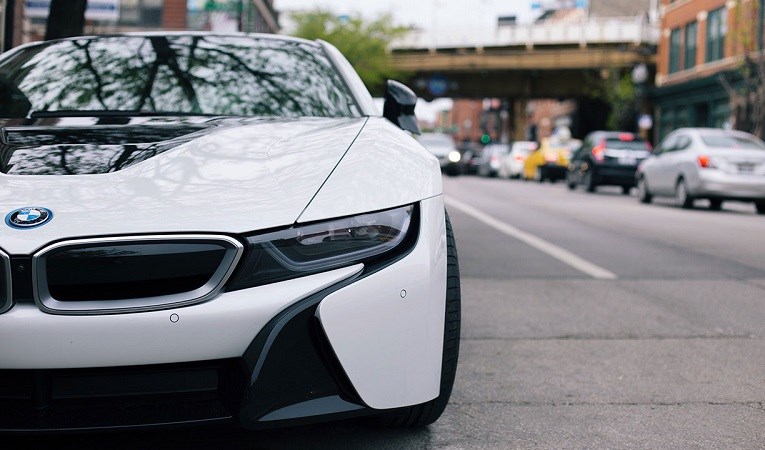
To the prospective customer considering the switch from a conventional car to its electric cousin, some questions to ponder: will your EV be cheaper? Will it get you to your destination or run out of juice? How long will it take to recharge? And do you even know where you’ll charge it?
These four questions must be answered if electric cars are to compete with – and eventually overtake – the international combustion engine cars of today, says Morningstar analyst Seth Goldstein.
That’s not to say potential demand is scarce. According to recent survey data, more than 60% of American motorists say they’re interested in EVs.
But interest is one thing, proof of desire to purchase is another. Only 5% of the surveyed cohort say they’re willing to pay for an EV. In other words, battery-powered cars are good to look at, but doubts remain over their cost and efficiency.
And once these criteria are met, the mass market consumers will be more likely to buy EVs, says Goldstein.
“By 2025, EVs will appeal to the mass market consumer in China, the EU, and parts of the US, where sufficient charging infrastructure has been built.”
In this third part of our series on the electric car revolution, we examine the four criteria – cost, range, charging time and charging infrastructure – in more detail.
Cost
By 2025, Goldstein expects EVs to be cheaper than conventional cars on a 15-year total cost-of-ownership basis.
At present, EVs cost about $8,600 more than internal combustion engine (ICE) vehicles on a 15-year total cost of ownership basis. This is because of a higher purchase cost and high replacement battery cost, which is partially offset by a lower operating cost.
“While the purchase cost will remain higher for an EV than an ICE, lower annual EV operating costs will more than offset the narrowing purchase price difference,” says Goldstein.
But as battery costs fall, the purchase price of an EV and the replacement battery cost of an EV will follow suit. Further, the operating cost gap will slightly widen: by 2025, EVs will be nearly 5000 cheaper than ICE cars.
Goldstein’s cost analysis excludes subsidies as he thinks they will be phased out: “We do not think they will be needed to drive EV adoption past the early-2020s.”

Range
As costs fall, range will increase. By 2025, EVs are expected to have a range of 300 miles - that's enough juice to get seaside fans from Brighton to Blackpool. This is the minimum expectation among consumers, Goldstein says, and also at the low end of the ICE driving range on a single tank of fuel.
But progress is being made: currently, EVs can cover about 240 miles; five years ago, they could only do 100 miles.
“Prior to 2016, no EVs had a 300-mile range,” says Goldstein. “However, more EVs now have a 300-mile range, with the max range reaching 370 miles in 2019.
The key to increased range is due to two factors: battery size and battery “chemistries”, in short, the amount of energy a battery can contain.
“In 2018, the average EV battery size was 44 kWh. We forecast this number to increase to 50kWh in the future, which will add roughly 25 miles of range due to the larger battery size alone," adds Goldstein. “The remaining 35 miles will come from new cathode chemistries, such as the NMC 622 and NMC 811.5.”
In the next few years, 349 electrified vehicles will be launched.
Charging Time
Currently you need 30 minutes to get an 80 per cent recharge on a typically electric vehicle. But Goldstein expects this will come down to about five to 10 minutes, which is only slightly longer than the average three minutes it takes to fill a petrol tank.
This difference in charging/filling times won’t be enough to dissuade prospective EV buyers, in Goldstein’s opinion. What’s more, those who have a charging outlet at home will avoid the petrol station queue altogether.
“The falling charge times will be due to higher-voltage charging systems and better battery management systems that will allow the battery to charge faster. Tesla launched its first DC fast chargers (also called Superchargers) in 2012,” Goldstein says.
“At the time, Level 2 chargers, which take around 3.5 hours to charge an EV to 80 per cent, were the standard chargers. Within several years, DC fast chargers have become standard for highway charging.”
Charging Infrastructure
Much of the mass market potential for EVs hinges on the availability of charging outlets. For the moment, consumers baulk at the idea of switching to an EV because of a perceived lack of places to charge them.
A useful way to gauge a region’s charging infrastructure is the number of EVs per charger, Goldstein says.
Each region will have a different EV fleet size and require varying numbers of chargers to support the fleet. Regions with a lower EV per charger metric are more likely to see greater adoption, as charging infrastructure anxiety will be relieved.
Conversely, regions with a higher EV per charger metric are more likely to see charging infrastructure anxiety continue to limit EV adoption.
“We forecast that China and Europe will have sufficient charging infrastructure for mass market EV adoption, while the US will only have sufficient infrastructure in some of the country,” Goldstein says.
"Over time, reduced charging times will result in fewer total chargers required to support mass market adoption. However, we view the initial mass buildout of charging infrastructure as required to alleviate consumer charging infrastructure anxiety.”











:quality(80)/cloudfront-us-east-1.images.arcpublishing.com/morningstar/6BCTH5O2DVGYHBA4UDPCFNXA7M.png)

















